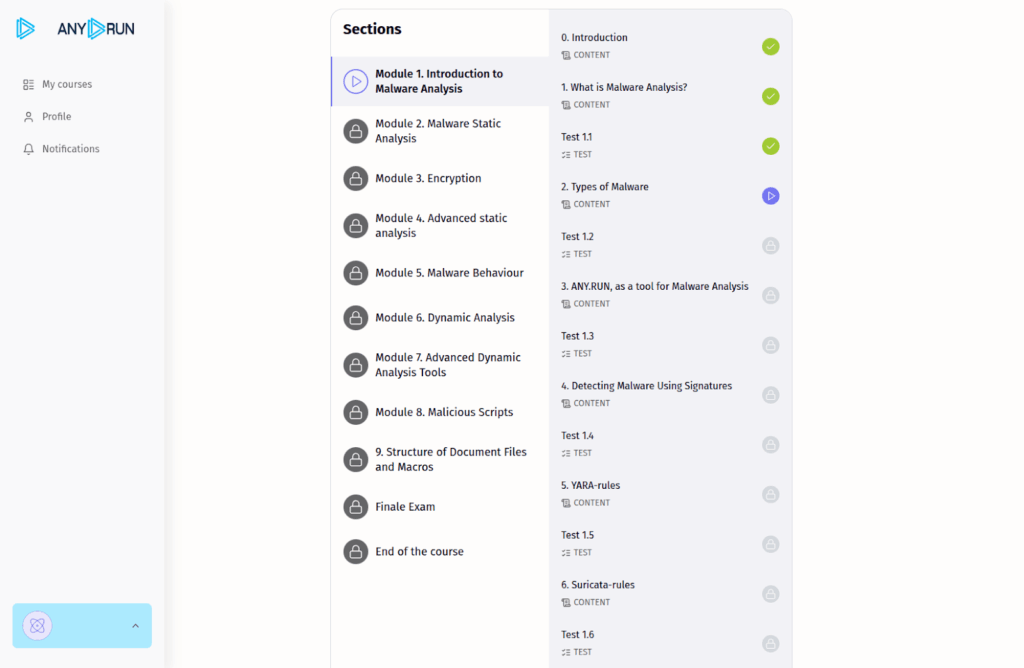Getting the help of experts is one of the best ways to enhance a university’s curriculum and align it with the needs of the market. That is the goal of Security Training Lab by cybersecurity solutions provider ANY.RUN. This course is built to facilitate knowledge exchange between active professionals in malware analysis and aspiring specialists.
Outsourcing some of the training grants certain benefits for universities. In this article, we’ll cover three key advantages of boosting your learning process with the help of external sources.
Post Contents
Benefit №1: Close the skill gap
Recognized academic institutions focus on helping their students reach top results in their industry. On the way to achieve that, universities should take action to close the gap between academia and skills that are in-demand on the job market. To tackle this problem efficiently, they can make professional malware analysis training a part of their studies.
ANY.RUN’s products are trusted by over 500,000 analysts and security teams of 15,000 organizations. This means that the company’s experts get daily updates on fresh threat investigations, TTPs used by malicious actors, and the evolution of malware families.
Security Training Lab accumulates this knowledge in an accessible way by ensuring that:
- Students get access to comprehensive materials in different formats
- The learning process is practice-based and provides skills relevant today
- Participants get supported by fellow students and ANY.RUN’s team
- They upgrade their expertise to fit the needs of the job market
- Academic staff gets to manage and monitor the learning process
Benefit №2: Improve curriculum
What academic programs might often lack is practice. This means not just any practical tasks but, most importantly, overcoming real-world cybersecurity challenges. Threats evolve at an unprecedented speed and malware analysts need to be able to track them to stay updated.
In the academic setting, arguably the only way to achieve that is to outsource some of the training. Otherwise, parts of curricula might become outdated too quickly. Security Training Lab mitigates this risk by offering a course that is fully focused on studying relevant threats targeting real infrastructures across different industries.
Benefit №3: Save resources
Among other things, external training requires less effort and resources, especially if it’s a ready-to-use product with a thought-out structure and integration opportunities.

ANY.RUN’s Security Training Lab is comprised of materials for 30 academic hours: written content, video lectures, interactive tasks, and assessment tests. In its program, you’ll find nine modules covering topics like:
- static malware analysis, i.e. investigating malware without execution
- dynamic analysis to observe threats as they unfold in a safe environment
- application of a range of tools for efficient malware analysis
- encryption methods, malware behavior, and malicious scripts
But ANY.RUN offers much more than just study materials. The course also includes full access to the Interactive Sandbox, a system for managing the learning process, and a vibrant community to facilitate networking and support.
With this course, both professors and students will be fully equipped for extensive malware analysis training. And universities get to save resources: since everything’s included, there’s no need to spend finances and time on forming the program or inviting individual experts to teach the course.
Cost-effectiveness is reached thanks to the fact that:
- There’s no need for extra investment: Provide students with world-class training while eliminating the need to expand the faculty
- Simple integration is available: Security Training Lab is compatible with learning management systems and offers a smooth integration into the curriculum without additional expenses
- No infrastructure is required: Everything you need for efficient malware analysis training is embedded into the course.
Conclusion
Outsourcing a training program is one of the most simple and efficient ways to boost the skills of students, expand their expertise, and equip professors with tools for a comfortable learning process.